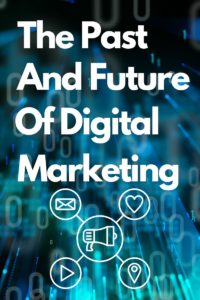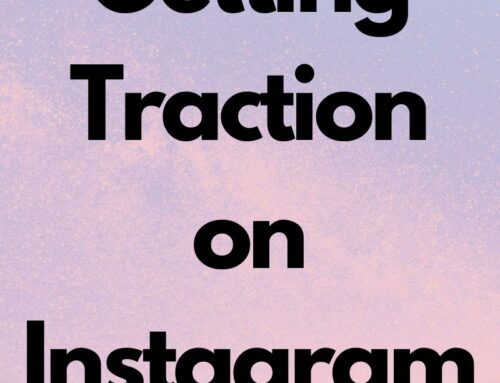 The future is mostly unpredictable, even using a crystal ball doesn’t always guarantee accurate predictions. However, to get a sense of where we are heading, we must look back. You cannot know where you are going until you know where you are coming from. This article will have an in-depth look at the past and future of digital marketing.
The future is mostly unpredictable, even using a crystal ball doesn’t always guarantee accurate predictions. However, to get a sense of where we are heading, we must look back. You cannot know where you are going until you know where you are coming from. This article will have an in-depth look at the past and future of digital marketing.
The Evolution of Digital Marketing
Digital marketing gained traction in the 1990s following the discovery of the internet and web 1.0. Web 1.0 was limiting because it allowed users to search for information but could not share the same information via the web. Let us look at four technologies that have had a huge impact on digital marketing in the past.
The World Wide Web
The massive adoption of the internet over the last three decades is the one factor that has had the greatest effect on digital marketing. The World Wide Web was launched by Tim Berners-Lee and his associates in 1991, but it was until 1995 that the number of web users rose exponentially after the first mass-market browser Netscape burst onto the scene.
As internet users kept rising, more players came along, such as Yahoo in 1994 and Google in 1998. With the internet came search engines and email, which forever transformed the digital marketing landscape. Email soon became an outbound marketing tool competing with the traditional radio, television, print, and telephone marketing media. On the other hand, search engines cataloged websites and made it possible for consumers to find products and services they needed online. E-commerce sites like Amazon, founded in 1994, and Ebay, established in 1995, took online shopping to the next level. By 2006 search engine traffic hit 6.4 billion in a month, and no digital marketer wanted to be left behind. Search engine optimization techniques like creating backlinks, keyword stuffing, and tagging became prominent. Also, search engine marketing (using paid ads on search engine platforms) became common.
Social Media![]()
Six Degrees is widely believed to be the first social media site established in 1997. But, MySpace, founded in 2003, popularized social networks when it became the most expensive website in 2006. Facebook was started in 2004 and, by 2008, had become the social network with the most users. It didn’t take long for digital marketers to realize the potential of social media platforms to promote their brands and engage with customers. Social media platforms have also metamorphosed into paid ad networks making social media marketing essential for all businesses.
Smart Phones
Early cell phones of the 70s and 80s cannot come close to the multi-functional aspect of smartphones. Blackberry introduced the first true smartphone that could support email and web browsing besides calling and texting in 2003. Today, smartphones have become the primary device for going online. Smartphones have allowed digital marketers to have a wider reach, run more targeted campaigns, and have higher conversions due to convenience.
Big Data Analytics
The emergence of social media networks means online users are sharing more of their data. The ‘cookie’ marked another milestone in tracking the browsing patterns of internet users. Technological advancement has upped the ability to collect and analyze big data leading to data-driven marketing. It is now possible to track human behavior patterns and predict customer needs.
The Future of Digital Marketing
The past and current developments in digital marketing can give us a taste of things to come. With over 6 billion people owning smartphones and the number projected to keep rising, the online world has moved into our pockets. The majority can now access the internet anytime and anywhere, thanks to smartphones. Businesses will focus on developing mobile-friendly sites and using mobile apps to enhance customer experience. Also, businesses will keep running campaigns targeting mobile users to benefit from their wider reach. Mobile technology will be a focal point for all digital marketers going forward.
Data collection by marketers was mainly through responses to emails and point-of-sale interactions. However, online search patterns, online purchases, social media activity, and geo-location are among the ways data is collected today. In the future, businesses will keep relying on big data and predictive analytics to acquire emotional intelligence on the best ways to connect with customers.
Other new technologies that are expected to impact digital marketing in the future are; virtual reality, which will create a new avenue for marketing products; live video streaming, which is trending, but most businesses are yet to incorporate it into their marketing strategy; voice search, which is on the rise as marketers will be forced to optimize their websites for voice searches, and artificial intelligence which will improve on timely, and accurate analysis of data, and possibly buy advertising automatically while interacting with clients with a more human touch.
In 2021 the digital advertising industry spending was valued at $521 billion, and the figures are projected to keep rising. Also, the number of online users in 2021 was 4.9 billion, which rose from 4.6 billion in the previous year. With billions of online users and rapid advancement in technology, digital marketing will keep evolving in unprecedented ways, something that should excite all marketers that we are yet to experience more efficient and effective ways to connect with customers.
Let Visual Web Group assist your company website in dominating your vertical! We offer video packages to enhance your website SEO. Not sure where to start? Contact us today for a complimentary consultation to see how Visual Web Group can boost your SEO ranking with quality video media to start connecting with your customers today!







